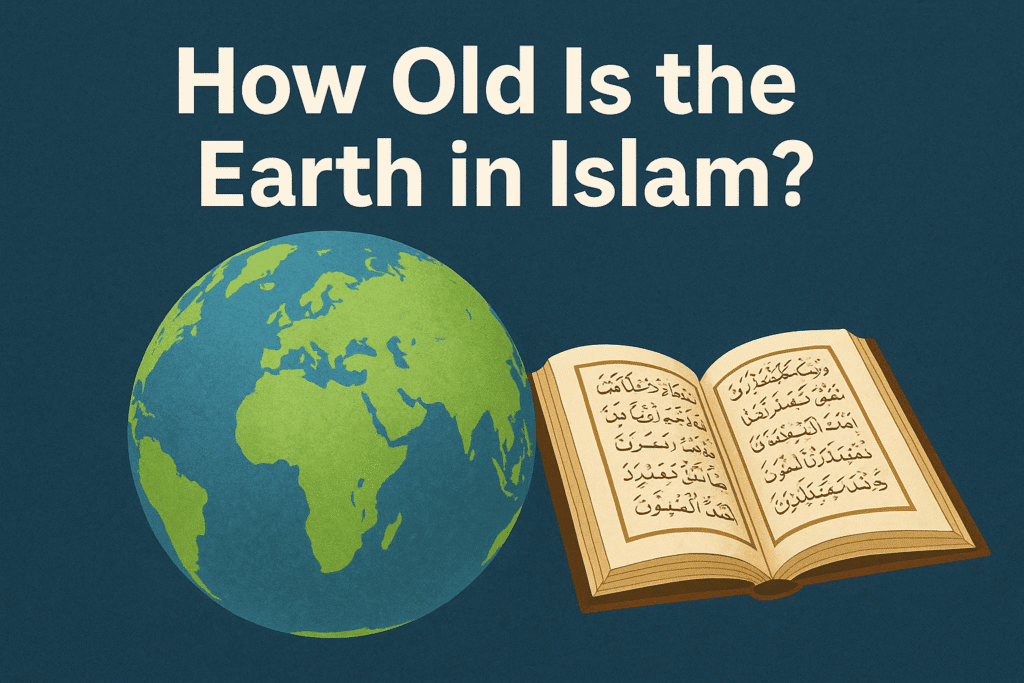How Old Is the Earth in Islam? Quranic View Explained
Curiosity about the Earth’s age appears in many faiths and scientific discussions. For Muslims and those interested in the relationship between Islam and science, this question holds deep significance. Exploring the Quranic perspective helps people understand beliefs about our planet’s creation, and sheds light on how Islamic thought intersects with science and other religions.

What Does the Quran Say About the Creation of the Earth?
The Quran addresses creation in powerful language, often using broad terms to describe the universe’s origins. Verses like Surah Al-A’raf 7:54 mention: “Your Lord is Allah Who created the heavens and the earth in six days and then established Himself above the Throne.” Similar statements appear in several other chapters, highlighting a six-period (often interpreted as “days”) timeline.
However, the Quran does not provide specific numbers or precise dates about the Earth’s age. The Arabic word for “day” (yawm) can mean a regular day, an era, or a stage. These descriptions use metaphor and vivid imagery, encouraging reflection rather than pointing to a strict chronological record. The absence of exact figures leads to varied interpretations about the literalness of the creation timeline. Some resources examine how these “days” might represent longer periods, compatible with scientific timescales, which you can see discussed at Lamp of Islam.
Classical Islamic Scholarship and How Old Is the Earth in Islam
Major Islamic scholars like Ibn Kathir, Al-Tabari, and Al-Razi have offered thoughtful commentary on the creation verses. Much classical scholarship focuses on the order and spiritual meaning of creation rather than its measurable age. Ibn Kathir, for example, discusses the six days as periods of creative acts by Allah, not necessarily tied to the 24-hour days we know.
Al-Tabari and Al-Razi expand on this idea, exploring allegorical and rational readings. Their interpretations usually stop short of endorsing a strict age for the planet. Some manuscripts suggest timelines, but there is no clear consensus among the early scholars, as the issue did not carry the same scientific weight it does today. For a summary of how these classical views relate to modern questions, the article at IslamQA offers additional context.
Modern Islamic Perspectives on Earth’s Age
Many contemporary scholars view the Quran’s descriptions as open to harmony with modern science. The idea that the Earth is about 4.5 billion years old suits the language of the Quran if the “six days” are seen as phases rather than literal days. This approach allows Muslims who respect both scripture and science to find common ground.
Some argue that the Quran’s main goal is a spiritual message, not a scientific chronology. Others explore how Islamic tradition makes space for new facts and understanding. The idea that science and scripture can align has support in current Muslim discussion, explored further in Four Billion Years of the Earth’s History Summarized.
Comparison with Other Religious and Scientific Views
Religions and science take different paths to explain how old the Earth is. Christianity often has two main camps: young-Earth creationists who accept a literal reading of Genesis (around 6,000 years), and those who blend scripture with science to accept an ancient world.
Judaism varies as well, ranging from literal interpretations to deeply symbolic ones. Scientific consensus, based on radiometric dating, puts the age of the Earth at about 4.54 billion years. Islam’s flexibility about the meaning of “six days” places its view closer to a figurative understanding, rather than a direct opposition to scientific data. A comparative look at these timelines can be seen in DebateReligion on Reddit, where both religious and scientific opinions are discussed.
Conclusion
Islam does not place a precise numerical age on the Earth. The Quran uses poetic language, focusing on meaning and purpose rather than measurements and dates. Classical and contemporary interpretations differ, but most allow room for both faith and science. This approach gives Muslims the freedom to find spiritual depth in scripture while appreciating what science teaches about our world. The question of the Earth’s age bridges belief, tradition, and scientific curiosity, showing that dialogue between religion and science continues to inspire new thinking today.
